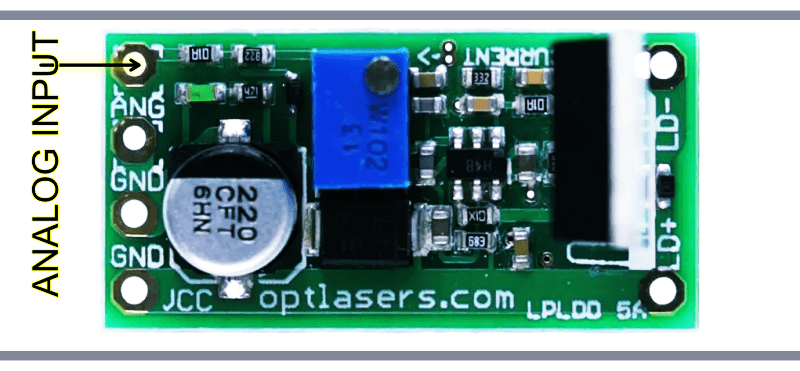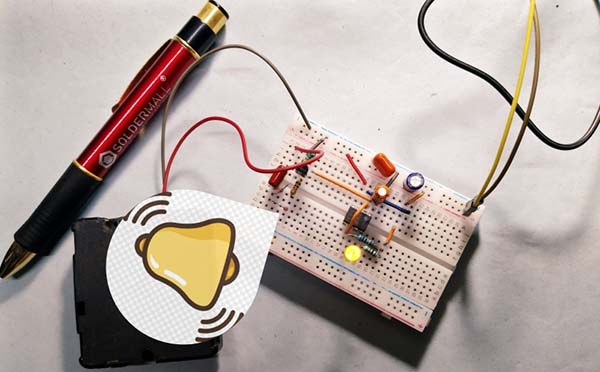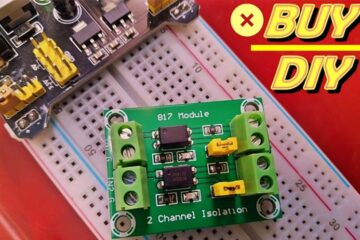This article shows basic circuit ideas for pulsing low power visible semiconductor lasers using inexpensive components which are fairly readily available. First of all, you need to know that this is a very belated sequel to two articles posted here a few years ago. So, take a look at the following links to get a quick overview of visible lasers and laser drivers.
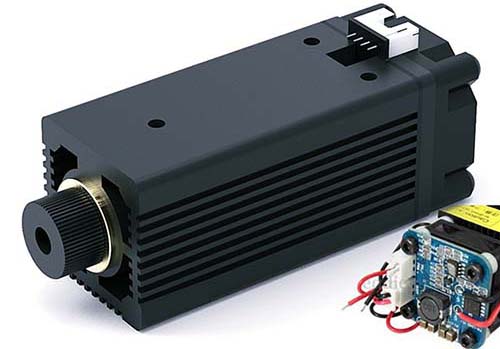
TTL/PWM?
First off, keep note that the voltage input to the TTL port of a pulsed laser driver will only set the laser driver on/off. Often, a 0-2V input is fully off, a 2.5V-12V input is fully on, and there is no intermediate state (either fully on or fully off).
However, it is possible to achieve a half output power even in this method but thru a little microcontroller. For a theoretical example, simply use a 5V TTL input for 1ms, then use 0V TTL input for 1ms. If the cycle repeats, then one second will repeat 1000/(1+1) = 500 times. So, the output power here will be ON Time/(ON Time + OFF Time) = 1/(1+1) = 50%. And, since the switching frequency is well above 30Hz, the viewer feel that the laser source is continuously outputting the same power (actually the power is halved).
Above shown is the photograph of a quite popular single channel low current laser diode driver module (https://optlasersgrav.com/). The module’s modulation input can be used as a 0-5V input (TTL) or as an analog input (ANG), and it allows modulating the drive current with square waves up to 100kHz frequency. Analog modulation means that by feeding 2.5V on the analog input you get 50% output power, analogically by applying 4V you get 80% output power, and so on. As it seems, design of this little laser driver module is centered around a highspeed rail-to-rail input/output amplifier H4B (AD8027 ARTZ).
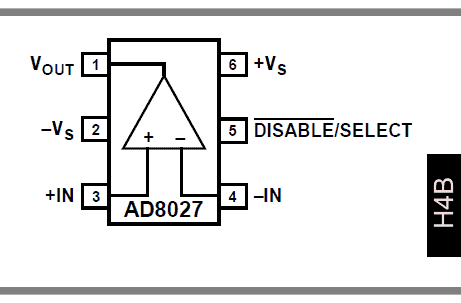
The next key component is a Logic-Level N-Channel Power Mosfet (IRLZ44N).
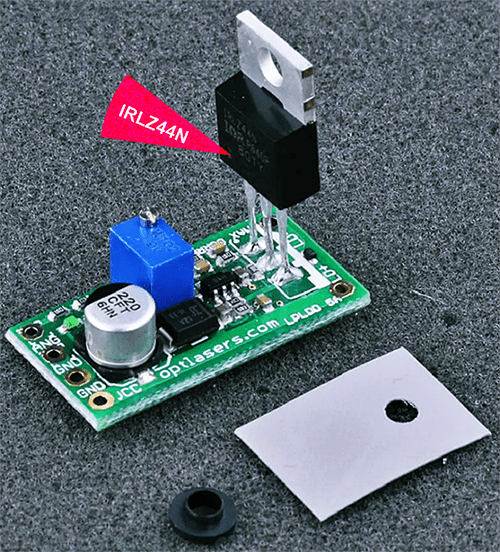
A laser driver circuit, in its most basic form, is a simple current source built with a current-sense resistor and an op-amp. The op-amp measures the voltage across the current-sense resistor and governs its output in a feedback loop to maintain the voltage drop across the current-sense resistor as close as possible to the control voltage. And, as long as the modulation frequency is smaller than the bandwidth of the feedback loop, the laser current can be simply modulated via the control voltage.
Note that a laser diode is usually driven with a current source rather than a voltage source. Relatively cheap laser driver modules you can see on webstores often include an onboard buck regulator to bring an external DC voltage input down to a lower voltage at higher current, which then feeds a current regulator and modulator circuit. And, most of them can handle pulse width modulation frequencies up to 20kHz.
DIY Laser Driver (TTL/PWM)
Now a question arises, how to build a quick (and dirty) TTL/PWM Laser Driver if there are no readymade modules handy? To solve this issue, you can follow the below simple circuit idea to make one yourself.
As opposed to my previously posted laser driver design ideas, the given circuit is a bit easy to setup, and it employs a galvanically-isolated input port. I’ve added the input isolation mechanism with the intent of controlling the laser thru an external microcontroller. Without further ado, here’s its schematic:
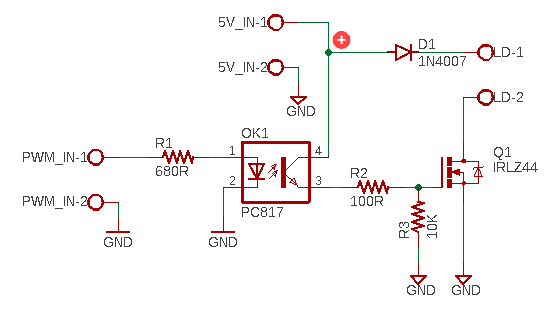
Nevertheless, my first (and fast) test was with a 5mW/532nm (4.5V) green laser pointer.
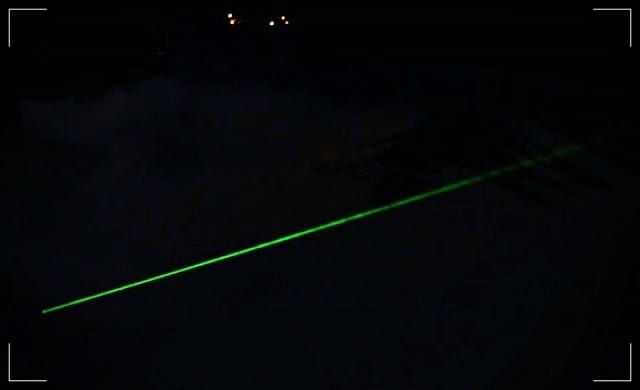
Keep in mind that since this is the lite version of a laser diode controller, it does not have protection against polarity change. So always be sure you connect the laser diode (LD) aright. Moreover, depending on the laser diode in use, you may need to tweak its power supply section accordingly.
All that left at this point is a note on safety. Beware, laser diodes pose a risk to the user. In microseconds, a rogue beam can permanently blind someone. With this precaution, if you pursue this boulevard of playing with lasers, keep the risks in mind, make yourself aware of them, and wear the right goggles that sufficiently protect against the wavelength of the laser you’re working with. Cheers!
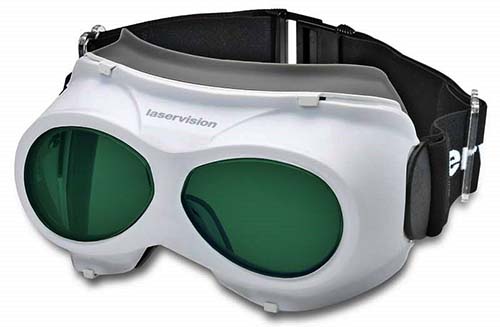
Laser Safety Glasses Selection Guide https://www.newport.com/g/laser-safety-glasses-selection-guide

